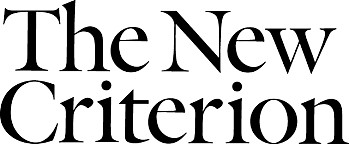March 25, 2024
This week: surfing, Kandinsky, Janice Biala, the Tower of Babel & more from the world of culture.
|
|
 |
|
Kandinsky: A Life in Letters 1889–1944, edited by Jelena Hahl-Fontaine (Hirmer Publishers): Arts writers, wrote Kandinsky, suffer perpetually from “inflated ego.” We leave the verity of this statement up to the reader. In any case—the barb comes from a letter to Alfred Barr, translated and collected for the first time in the delightful Kandinsky: A Life in Letters 1889–1944, edited by Jelena Hahl-Fontaine. A Life in Letters captures not just the beaming personality of its subject, but also the energy of the times he lived through. Inside, we find a giddy, unsolicited letter to Schoenberg pleading for friendship, and later another message to the musician gently informing him that his attempts at engravings are just not very good. Supplied as well are the artist’s doting letters to his Kremlin-spy nephew, Alexandre Kojève; his impressions of Chagall (“fat and bald,” but “with a nice wife”); despairing wartime postcards to Franz Marc and Paul Klee; and a note to his publisher reminding him to double-check that all the reproductions printed in a new catalogue are “right way up, not upside down.” Kandinsky delivers a colorful portrait of a colorful man. —LL
|
|
 |
|
Janice Biala, Homage to Piero della Francesca, 1984, Oil on canvas, Berry Campbell, New York.
“Janice Biala: Paintings 1946–1986,” at Berry Campbell, New York (through April 13): The paintings of Janice Biala occupy that open space between abstraction and figuration, much as this artist freely cross-registered between the School of Paris and the New York School. Born Schenehaia Tworkovska in 1903 in Bia?a Podlaska, a city in Russian Poland, Biala came to the United States in 1913 and, in order to distinguish her work from that of her artist brother, Jack Tworkov, eventually took the name of her birth town. An exhibition at Berry Campbell, New York, now brings together thirty of Biala’s paintings and works on paper, beginning with her return to France in 1946 and spanning the next forty years of portraits, landscapes, and still lifes. Living until the age of ninety-seven, crossing paths with artists on both sides of the Atlantic, Biala straddled most of the twentieth century with work that absorbed and reflected the wide influences of her remarkable bohemian milieu. —JP
|
|
 |
|
Pieter Bruegel the Elder, The Tower of Babel, 1563, Oil on panel, Kunsthistorisches Museum, Vienna.
“Before and after Babel,” presented by Marc Van De Mieroop, at the National Arts Club (April 1): “Go to, let us go down, and there confound their language, that they may not understand one another’s speech.” Like the Trojan War and Noah’s flood, the Tower of Babel is more than a parable. Here, the historical parallel is the orthographic shift in the ancient Near East from an almost universal Babylonian cuneiform, in the second millennium B.C., to a polyphony of local, alphabetic scripts by the first millennium. An ambitious thesis explaining these developments will be presented next Monday, April 1, at the National Arts Club by Marc Van De Mieroop, the author of Before and after Babel: Writing as Resistance in Ancient Near Eastern Empires. Attendance is free with registration. —RE
|
|
|
|

